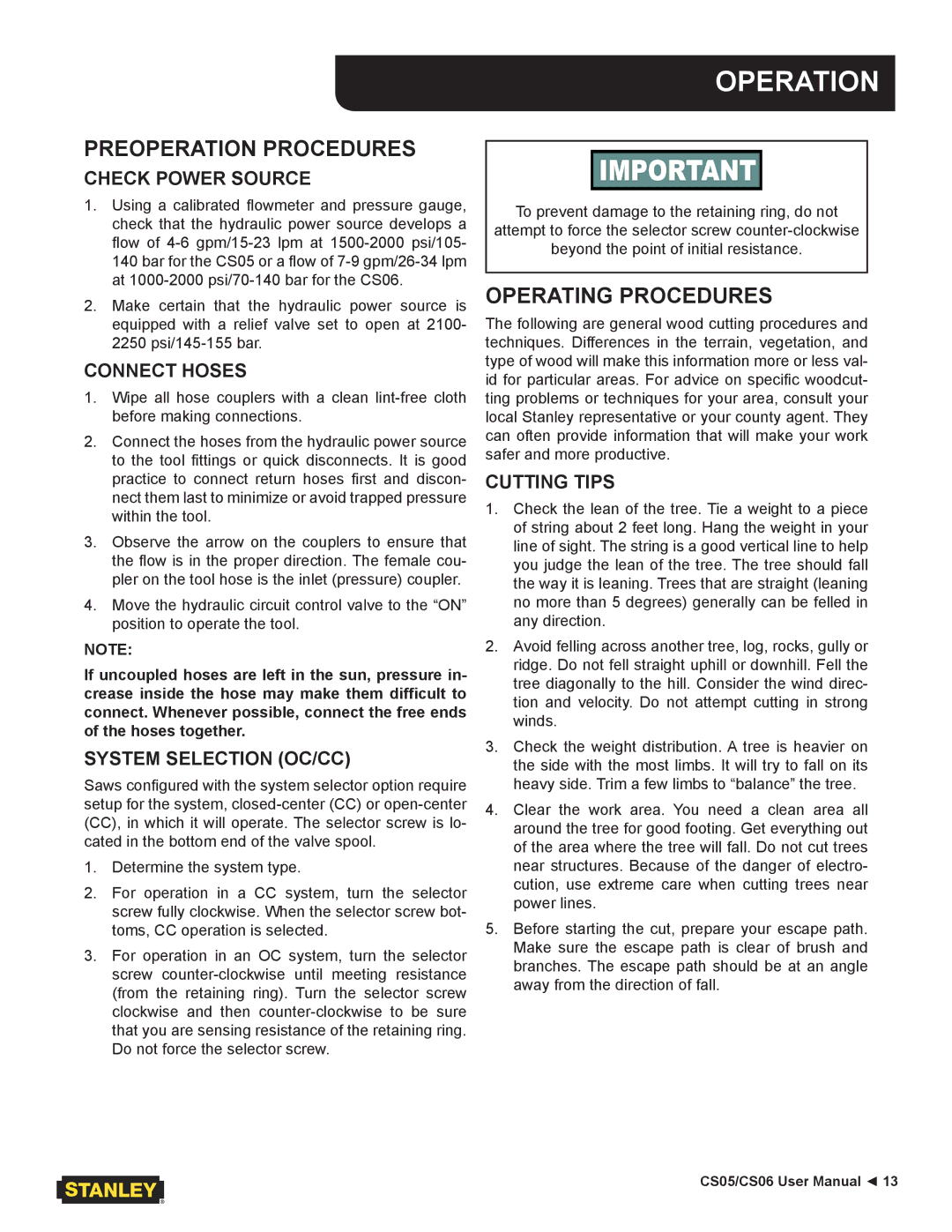CS05/CS06 specifications
Stanley Black & Decker has long been synonymous with quality and innovation in the industrial tools sector, and their CS05 and CS06 models exemplify this commitment. These two models represent some of the latest advancements in battery-powered electric tools designed for both professionals and DIY enthusiasts.The Stanley Black & Decker CS05/CS06 models are engineered with a powerful motor that delivers impressive torque and speed, allowing users to tackle a variety of tasks with ease. The CS05 model typically features a 20V Max lithium battery system that provides longer run time and improved battery life, ensuring that users can complete their projects without interruption. This battery technology is particularly advantageous for high-demand applications, making it ideal for construction, woodworking, and metalworking.
One of the standout features of the CS05/CS06 is their ergonomic design. Both models boast a lightweight structure and well-balanced form, allowing for extended use without causing fatigue. The soft-grip handle enhances user comfort and control, making precision tasks much simpler. Additionally, the compact design of the tools aids in maneuverability in tight spaces, making them perfect for both professional and home environments.
In terms of technology, the CS05/CS06 incorporates advanced electronic controls that offer variable speed settings. This allows users to adjust the speed according to the specific requirements of the job, providing versatility that is essential for tackling various materials and applications. The built-in LED work light is another handy feature, illuminating dark areas or work surfaces to improve visibility and accuracy during use.
Durability is a prominent characteristic of the Stanley Black & Decker CS05 and CS06 models. Constructed with high-quality materials, both tools are designed to withstand the rigors of demanding job sites. The protective housing and robust components ensure longevity and reliable performance, even under extreme conditions.
Lastly, both models come equipped with features that enhance safety, including safety switches and guards that prevent accidental starts. The overall combination of strength, versatility, comfort, and safety makes the Stanley Black & Decker CS05/CS06 a top choice for anyone looking to invest in a reliable, high-performance electric tool. In today's ever-evolving market, these models stand out as examples of where quality meets innovation.

